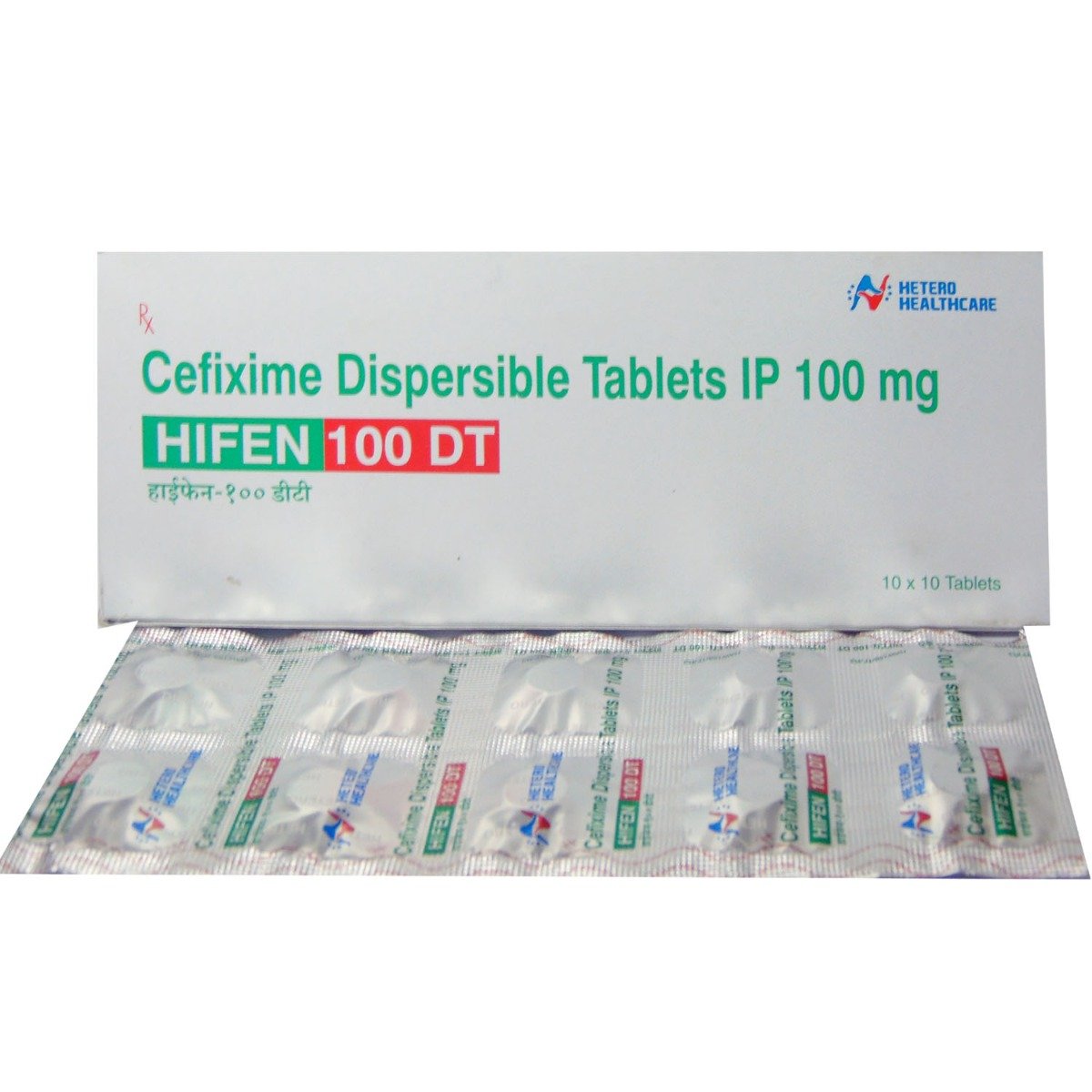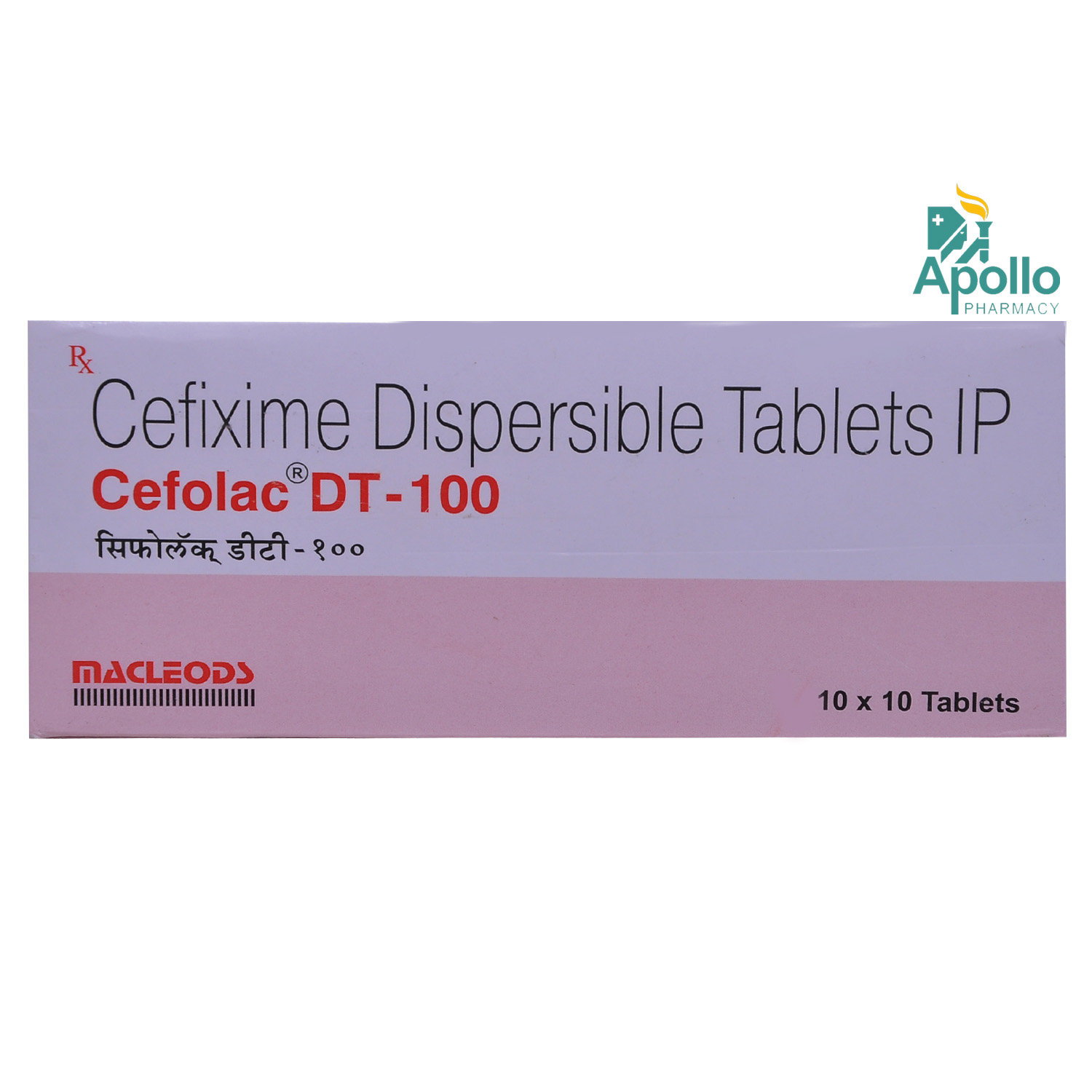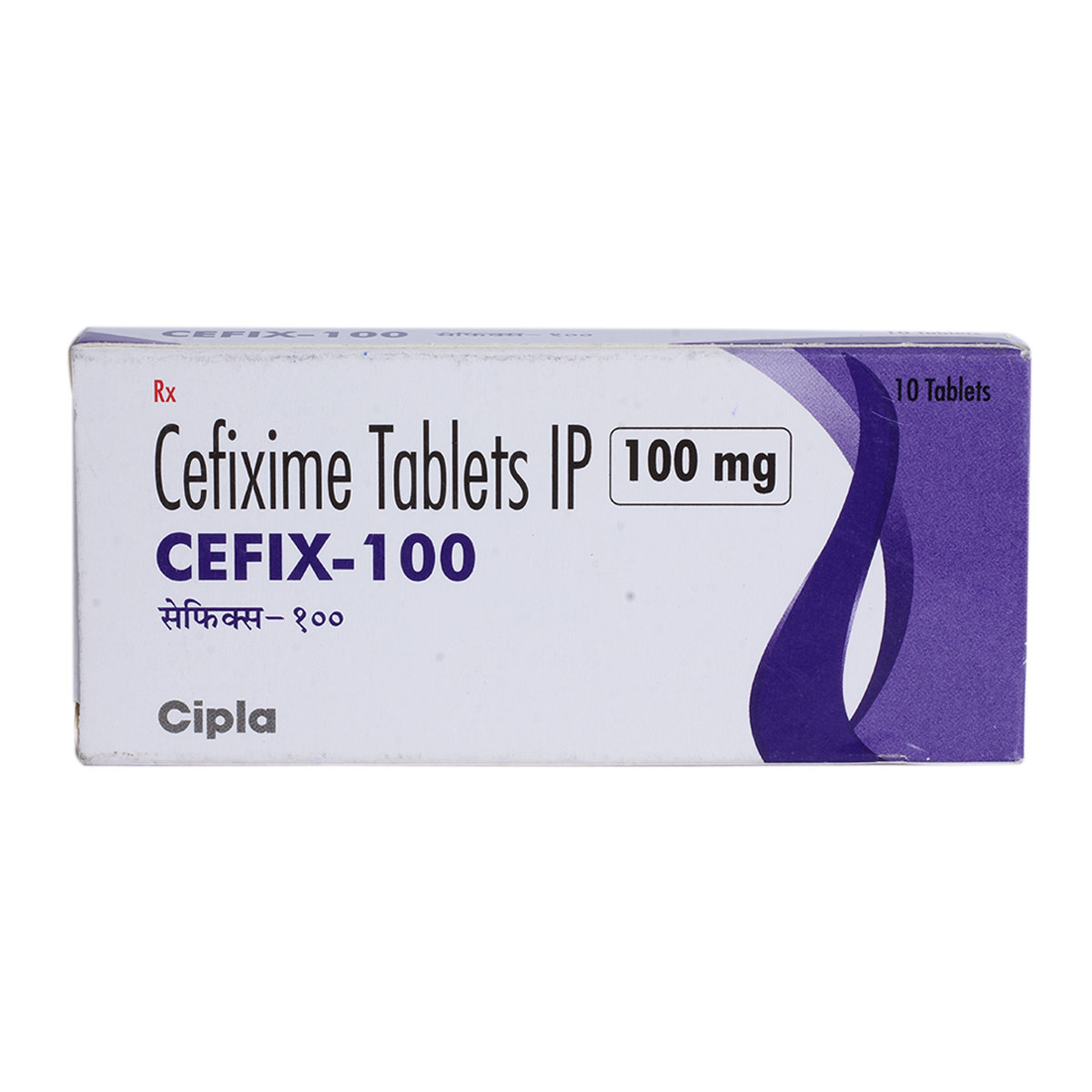Hifen DT 100 mg Tablet 10's
MRP ₹61.5
(Inclusive of all Taxes)
₹9.2 Cashback (15%)
Provide Delivery Location
Online payment accepted
 Prescription drug
Prescription drugWhats That
Composition :
Manufacturer/Marketer :
Consume Type :
Expires on or after :
Return Policy :
About Hifen DT 100 mg Tablet
Hifen DT 100 mg Tablet belongs to a group of cephalosporin antibiotics. It is used to treat susceptible organisms (bacteria)-caused infections of the ear, nose, sinuses (sinusitis), throat (tonsillitis, pharyngitis), chest and lungs (bronchitis, pneumonia) and urinary system (cystitis and kidney infections). Additionally, it is also prescribed to treat uncomplicated gonorrhoea (cervical/urethral).
Hifen DT 100 mg Tablet contains Cefixime that works by inhibiting of cell wall synthesis. In turn, Hifen DT 100 mg Tablet weakens and destroys the bacterial cell wall, leading to death. As a result, Hifen DT 100 mg Tablet helps to treat bacterial infections.
Take Hifen DT 100 mg Tablet as directed by the physician. Sometimes, you may experience common side effects such as diarrhoea, nausea, loose stools, abdominal pain, dyspepsia, indigestion, and vomiting. Most of these side effects do not require medical attention and resolve gradually over time. However, you are advised to talk to your doctor if you experience these side effects persistently.
Do not take Hifen DT 100 mg Tablet if you are allergic to cefixime, other cephalosporin antibiotics, or any other ingredients of this medicine. Before starting the Hifen DT 100 mg Tablet , please inform your doctor if you have colitis (inflammation of the colon's inner lining), renal dysfunction, liver disease, and seizure disorders. Do not take this medicine on your own as self-medication may lead to antibiotic resistance in which antibiotics fail to act against specific bacterial infections. If you are pregnant or breastfeeding, think you may be pregnant, or are planning to have a baby, ask your doctor for advice before taking the Hifen DT 100 mg Tablet . Drive only if you are alert as Hifen DT 100 mg Tablet may cause dizziness.
Uses of Hifen DT 100 mg Tablet
Directions for Use
Tablet/capsule: Swallow it as a whole with water; do not crush, break or chew it. Dispersible Tablet: Check the label for directions before use. Disperse the tablet in the prescribed amount of water and swallow the contents. Do not crush, chew or swallow as a whole. Liquid/Suspension: Shake the bottle well before use. Check the label for directions and take Hifen DT 100 mg Tablet in doses as prescribed by your doctor with the help of a measuring cup/dropper provided by the pack. Powder/granules: Check the label for directions before use. Mix the powder/granules in water, mix well and drink immediately.
Key Benefits
Hifen DT 100 mg Tablet is a short-term medication for a wide range of bacterial infections. It prevents the growth of bacteria by stopping the formation of a protective covering which is vital for its growth. It prevents and treats bacterial infections like ear, nose, sinuses (sinusitis), throat (tonsillitis, pharyngitis), chest and lungs (bronchitis, pneumonia) and urinary system (cystitis and kidney infections). Additionally, it is also prescribed to treat uncomplicated gonorrhoea (cervical/urethral).
How Hifen DT 100 mg Tablet Works
Storage
Drug Warnings
Hifen DT 100 mg Tablet has occasionally been associated with hypersensitive reactions that result in shock and mortality. If a reaction happens, stop using it. Do not take Hifen DT 100 mg Tablet if you are allergic to Cefixime or other cephalosporin antibiotics, or any of the other ingredients of this medicine. Talk to the doctor before taking Hifen DT 100 mg Tablet if you have seizures, liver or renal dysfunction, heart disorder, and inflammation of the colon's inner lining (colitis). Do not take Hifen DT 100 mg Tablet without first consulting the doctor if you are pregnant, planning for pregnancy or breastfeeding. Drive only if you are alert as Hifen DT 100 mg Tablet may cause dizziness. Hifen DT 100 mg Tablet may interact with certain tests such as glucose (sugar) in urine and give unusual results. Therefore, inform the doctor that you are using Hifen DT 100 mg Tablet before undergoing any tests.
Login/Sign Up
Login/Sign Up
Login/Sign Up
Login/Sign Up
Login/Sign Up
Diet & Lifestyle Advise
After taking the full course of Hifen DT 100 mg Tablet , probiotics should be taken to restore some of the healthy bacteria in the intestines that may have been killed. Taking probiotics after antibiotic treatment can reduce the risk of antibiotic-associated diarrhoea. Certain fermented foods like yoghurt, cheese, sauerkraut, kombucha and kimchi can help restore the intestine's good bacteria.
Include more fibre-enriched food in your diet, as it can be easily digested by gut bacteria, which helps stimulate their growth. Thus, fibre foods may help restore healthy gut bacteria after a course of antibiotics. Whole grains like whole-grain bread and brown rice should be included in your diet.
Avoid taking too much calcium, iron-enriched foods and drinks as it might affect the working of Hifen DT 100 mg Tablet .
Avoid alcoholic beverages with Hifen DT 100 mg Tablet as it can dehydrate and affect your sleep. this can make it harder for your body to aid the Hifen DT 100 mg Tablet in fighting off infections.
Side Effects of Hifen DT 100 mg Tablet
Diarrhoea
Nausea
Loose stools
Abdominal pain
Dyspepsia or indigestion
Vomiting
Habit Forming
Therapeutic Class
All Substitutes & Brand Comparisons
RX
Out of StockNot for online saleAnafix 100mg Tablet
₹65
(₹5.85 per unit)
5% COSTLIERRX
Not for online saleHifen 100 mg Tablet 10's
Hetero Drugs Ltd
₹66
(₹5.94 per unit)
7% COSTLIERRX
Not for online saleCeftas 100 mg Tablet 10's
Intas Pharmaceuticals Ltd
₹81.5
(₹7.34 per unit)
32% COSTLIER
Author Details
We provide you with authentic, trustworthy and relevant information
Login/Sign Up
Login/Sign Up
Login/Sign Up
Login/Sign Up
FAQs
Drug-Drug Interactions Checker List
- BCG VACCINE
- CHOLERA VACCINE
- TYPHOID VACCINE
- WARFARIN
- CARBAMAZEPINE
Disease/Condition Glossary
Bacterial infection: A bacterial infection is a condition in which harmful bacteria enter, multiply, and infect our body. It can target any body part and multiple very quickly. When you get infected with bacteria, you can experience generalized symptoms like fevers, chills, and fatigue. Bacteria are of various forms comprising commonly spherical, rod, and spiral-shaped. Bacterial infections vary from minor illnesses like sore throat and ear infections to severe brain infections like meningitis and encephalitis. Few harmful bacteria that cause infections include Streptococcus, Staphylococcus, and E.coli. Anyone can become infected with a bacterial infection. But, people with weak immune systems or taking immunosuppressive medicine can make you more prone to bacterial infection.

Have a query?
Alcohol
Safe if prescribed
It is unknown whether Hifen DT 100 mg Tablet interacts with alcohol. However, as a precautionary measure, it is advisable not to take or limit alcohol.
Pregnancy
Consult your doctor
Hifen DT 100 mg Tablet should not be used during pregnancy unless clearly necessary. Your doctor will weigh the benefits and potential risks before prescribing it. Please consult your doctor.
Breast Feeding
Consult your doctor
Hifen DT 100 mg Tablet should be administered to nursing mothers only if the benefits of therapy are judged to outweigh the potential risks to the infant. Hence it is best to consult a doctor before taking the Hifen DT 100 mg Tablet .
Driving
Safe if prescribed
Caution should be exercised; Hifen DT 100 mg Tablet usually causes drowsiness and confusion, affecting driving ability.
Liver
Consult your doctor
Hifen DT 100 mg Tablet to be taken with caution, especially if you have a history of liver diseases/conditions. The dose may have to be adjusted by your doctor.
Kidney
Consult your doctor
Hifen DT 100 mg Tablet to be taken with caution, especially if you have a history of Kidney diseases/conditions. The dose may have to be adjusted by your doctor.
Children
Safe if prescribed
Hifen DT 100 mg Tablet to be taken with caution, especially if you are children below 12. Your doctor may adjust your dose depending upon your age.




















